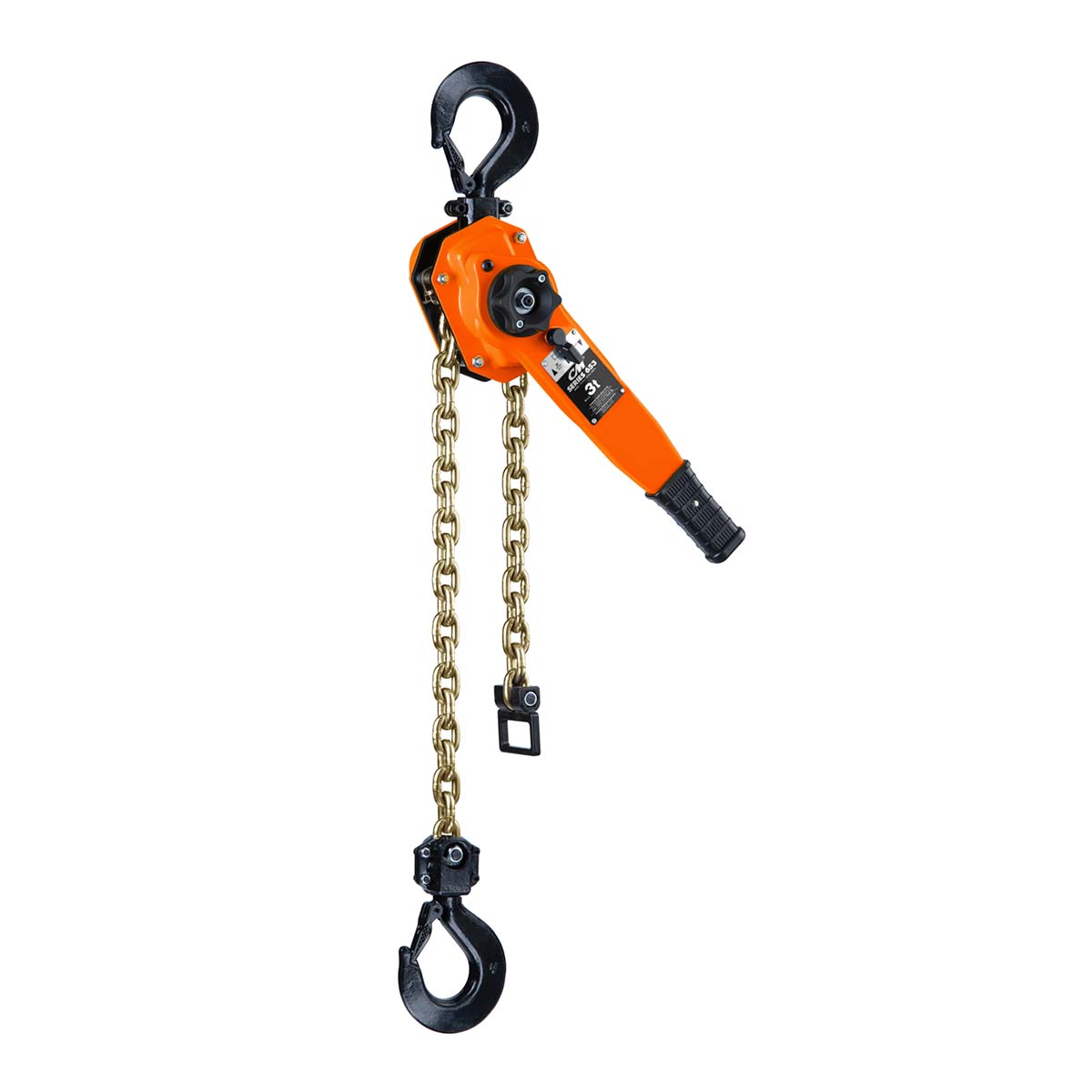Introducing our popular CM Series 653 ratchet lever hoist redesigned with a shorter handle (short handle on the 3⁄4 and 1 1⁄2 ton only). This modest modification makes a world of difference. Ideal for confined work areas, the Series 653 3⁄4 and 1 1⁄2 ton models are now some of the most nimble and easiest to operate hoists on the market today.
Shorter Handle on 3⁄4 and 1 1⁄2 Ton Models
With the shorter handle the overall weight of the hoist is reduced, making it even easier to carry and operate. Storage and transportation is less of a problem with the smaller size and using the lever in a 360º rotation is easier with less worry of obstructions.
Series 653 Lever Hoist Features & Benefits
Capacities & Lift
3/4, 1, 1-1/2, and 2 ton capacities (new shorter handle). 3 & 6 ton capacities (standard handle). Metric Rated. Standard Lift up to 20 feet.
Compact & Portable Design
Take this rugged hoist anywhere. Easily transported and rigged in the smallest work spaces.
Free Chaining
Single-handed free chaining feature allows for quick take up and positioning of slack chain. Designed not to accidentally free chain while under load.
360˚ Rotating Handle
Full rotation of handle allows for versatile rigging options when working in confined spaces.
Rugged Design
Impact resistant stamped steel frame and gear cover withstands repeated rigorous use.
Built to Last
Zinc plated hardened steel chain provides strength and longer chain life, translating to less downtime and increased durability.
Positive Load Control
Enclosed Weston type load brake stays clean and dry for positive load positioning.
Load Control
Double pawl design ensures that one pawl always will be engaged at all times for reliable load control.
Safe & Secure
Standard heavy duty forged robust safety latches on hooks provide positive and secure load engagement.
Corrosion Resistant
Standard powder coat finish for extra protection against corrosion when working in harsh environments.
Non-Slip Rubber Handle Grip
Comfortable rubber grip provides for extra protection against slippage.


Justin Albers (verified owner) –
These hoists are very reliable. I work in the utility trade as a Journeyman Lineman. Sagging wire, to stretching glass, this is a handy piece of equipment. Fast shipping and reasonably priced!